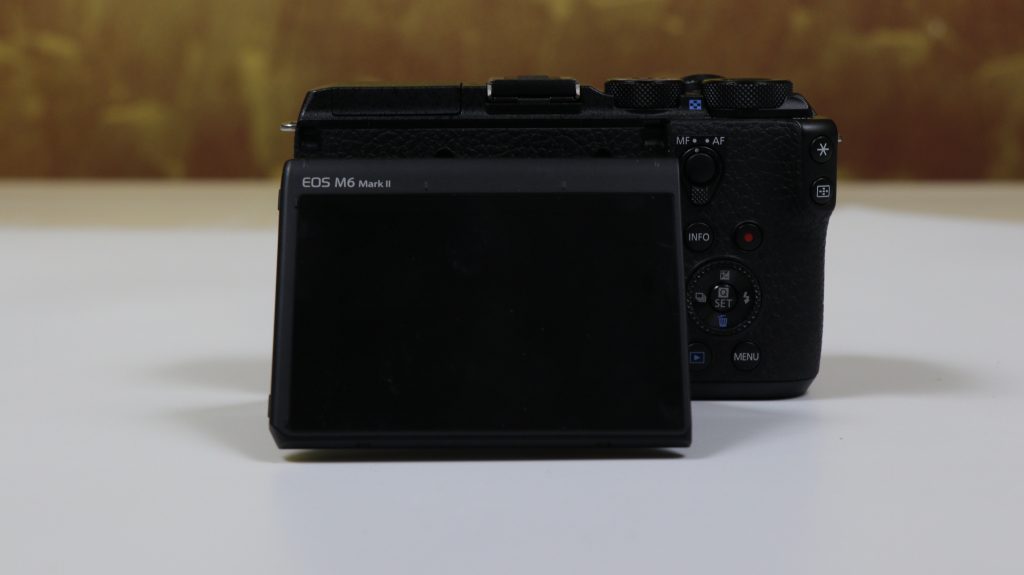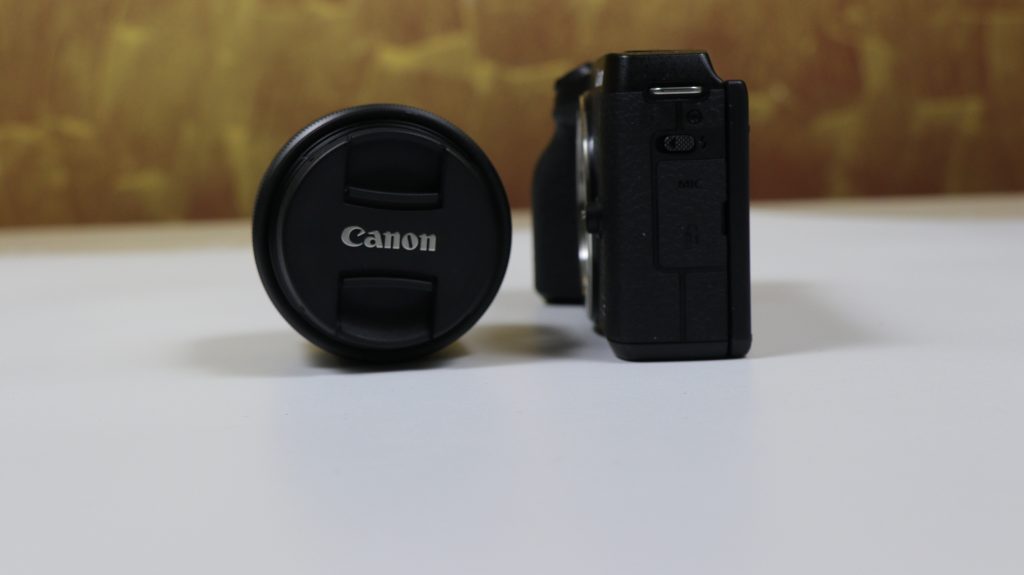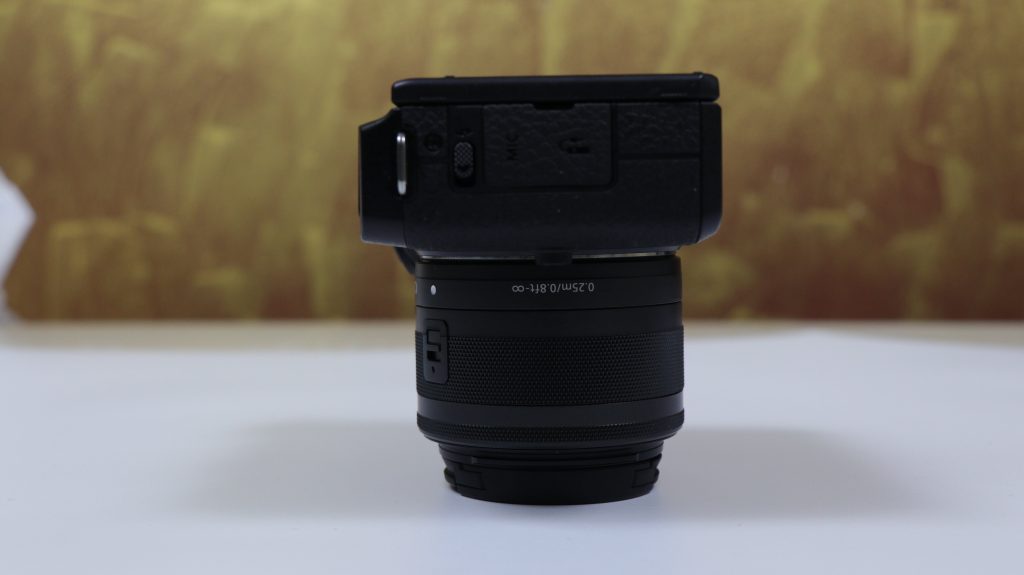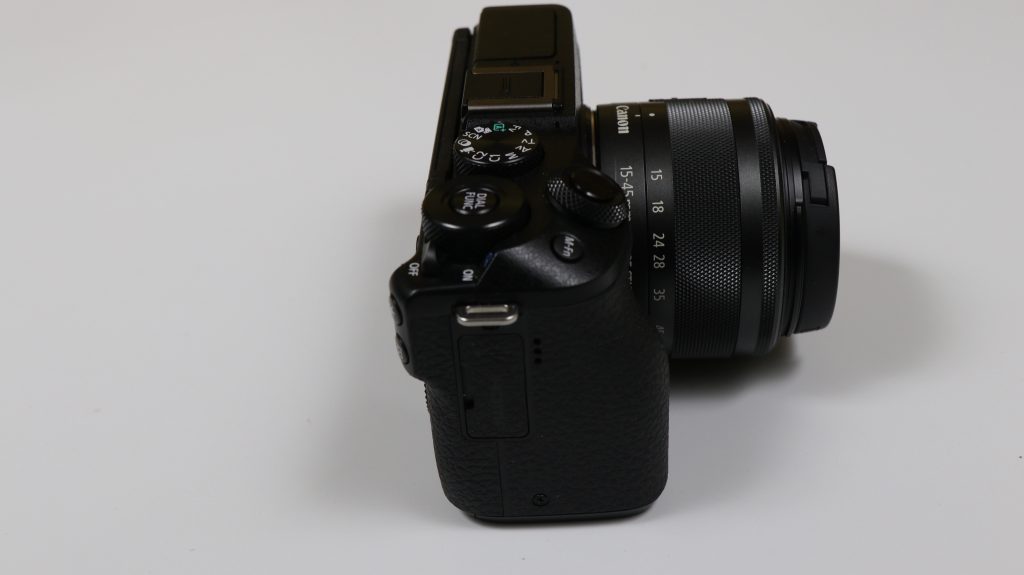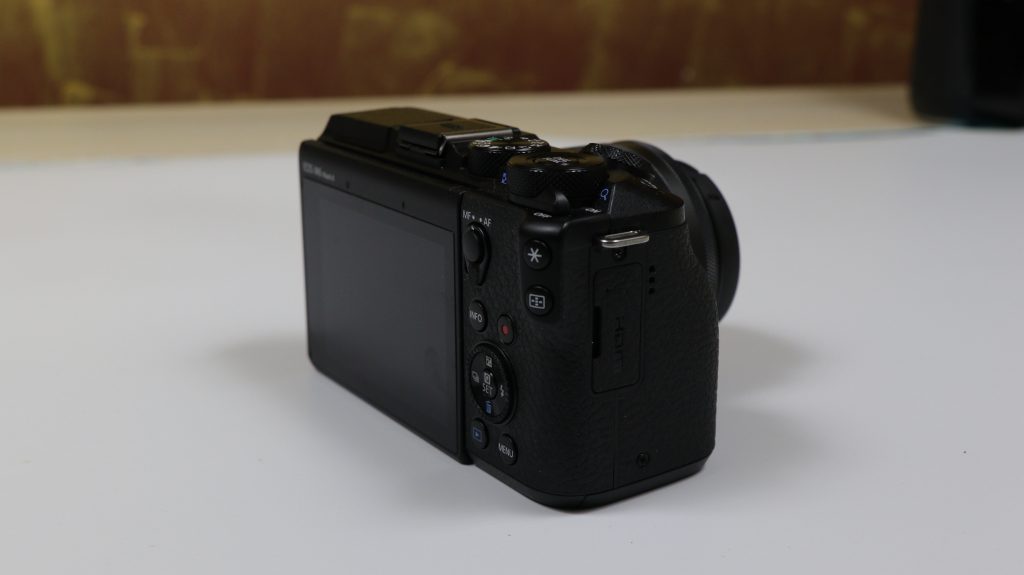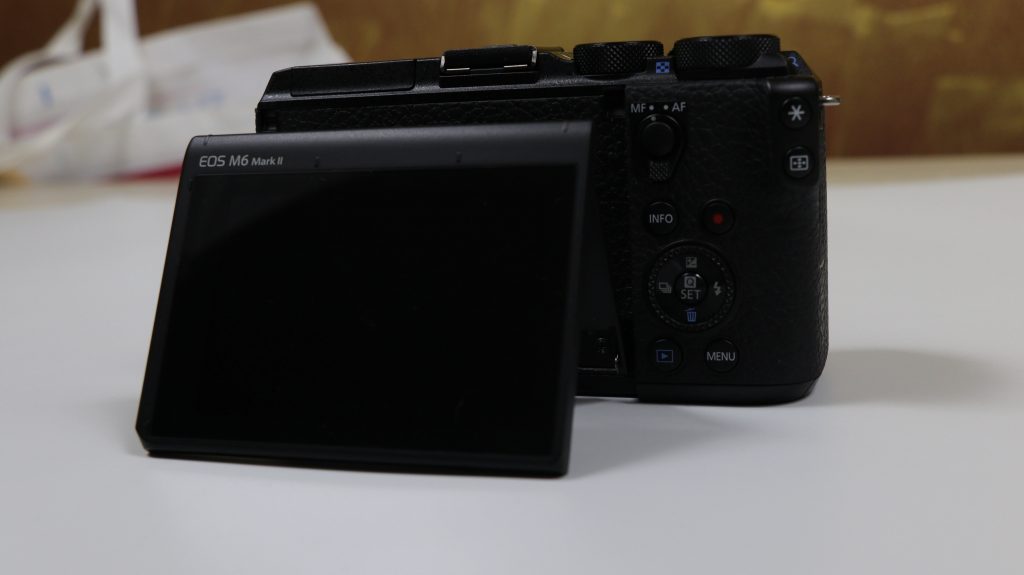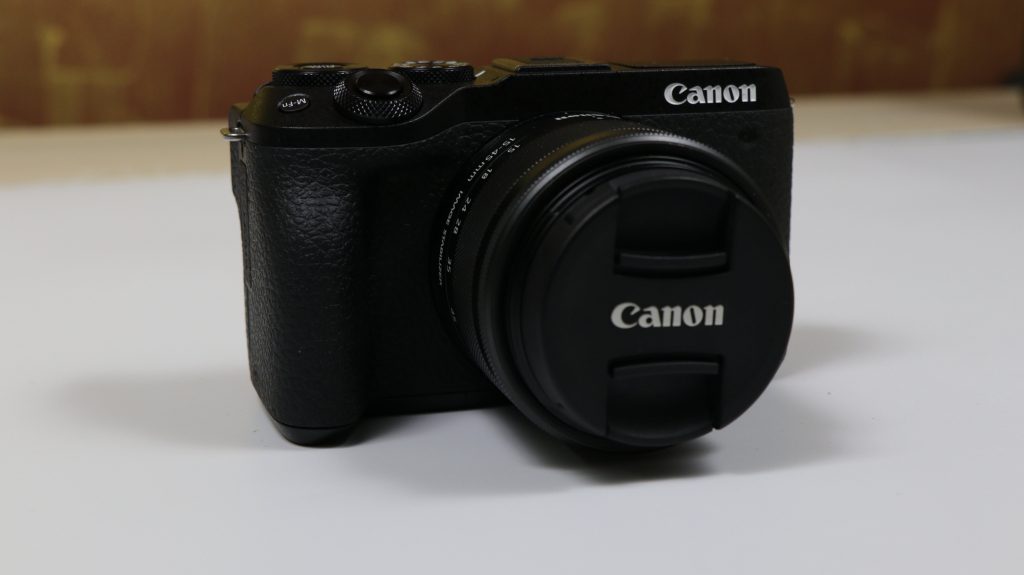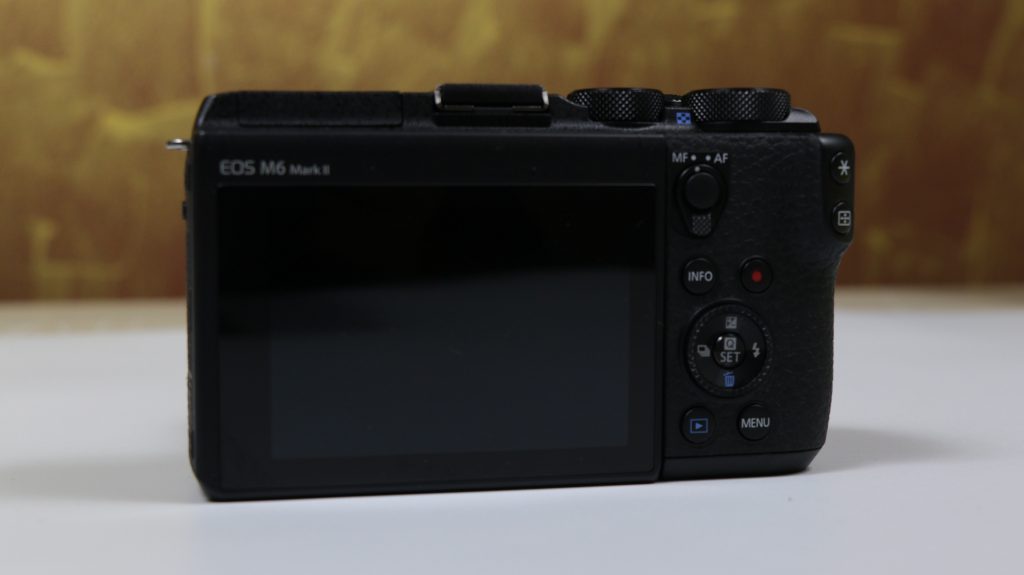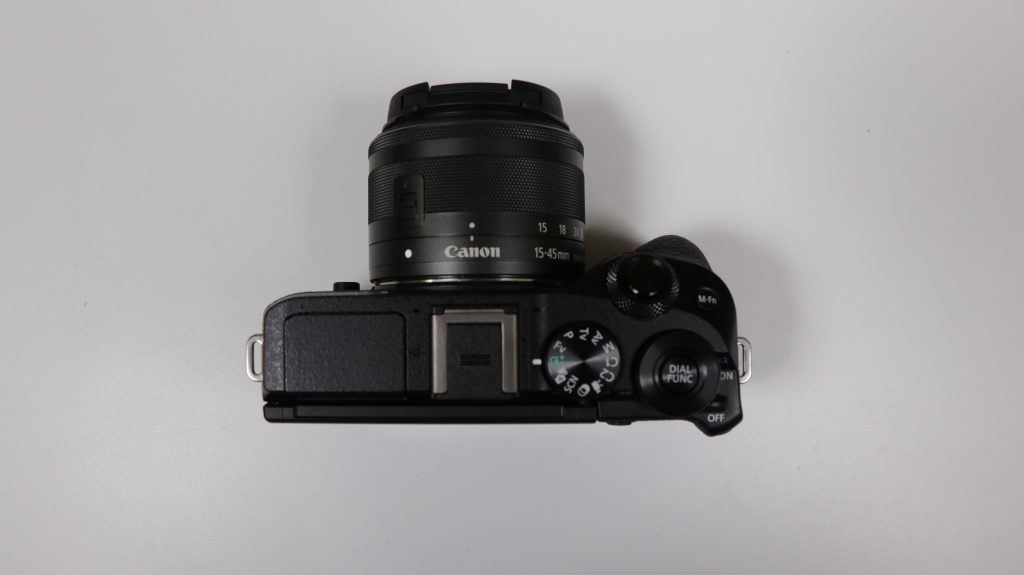Canon’s newest addition to their mirrorless camera line-up called the EOS M6 Mark II leads the flagship offering that replaces the ageing M5 and M6 cameras. This new offering brings the highest res crop-sensor, fastest shooting speed, and Dual Pixel tech to the table.
We had a chance to review this camera around the office, and here’s our take on this new camera.
Body and handling
The EOS M6 Mark II maintains a compact form factor and a lightweight design that comes in around 400 grams (including the battery), which is very impressive. The lenses offered by the company also follows this trait being light and agile at the same time. However, the mounts, unlike the Sony-s E-mount or Nikon Z-mount, cannot be interchangeable between EOS R and M cameras.
Another drawback comes through the absence of a built-in electronic viewfinder, which demands a INR 13,883 mark-up for the optional EVF-DC2 version. For this price, users get a decent 2.36-million dot, 120Hz OLED viewfinder that lacks the backout free for that fast action scenes.
Yet another caveat is the lack of in-body stabilization that surprisingly enough was provided in the original M6. This caveat is countered as the lenses do come with a stabilization feature except for the EF-M 32mm f/1.4 or EF-M 22mm F2 primes.
Overall, ergonomics is suitable for the best part, as the camera offers a good grip with more manual dials for that robust outlook. These dials let you choose shooting scenes, focus modes, aperture control, exposure dial, amongst others. Canon provides a useful quick “Q” menu that comes in handy to find the most common settings.
The display tilts downward by 45 degrees for high angle shooting and upward by 180 degrees that makes it perfect for shooters and vloggers all around. The built-in flash, too, comes in handy when you need to fill the existing light in the darkroom conditions.
Connectivity options include a USB Type-C port that can be used for charging and data transfers along with a mini HDMI terminal beside the transfer option via Wi-Fi or Bluetooth. The M6 Mark II offers a single memory card slot of a faster UHS-II slot, unlike the slower one offered on Nikon’s Z 50.
Performance
The headline feature of the M6 II comes from its high res 32.5MP APS-C sensor. This sensor is a massive upgrade over the 24.2MP sensor of the older M6. This sensor is paired with the new DIGIC 8 processor; it gives it a burst rate of well over 14 fps. Video resolution has been bumped from FHD to 4K.
However, what’s taken a hit is the battery life with a rated shot of just 305 is a lot less compared to the 90D. Fortunately enough, the sensor comes with the all improved Dual Pixel CMOS autofocus system with Eye AF, which works well under all conditions. The output from the lens was a sharper set of images despite the low lighting conditions we exposed it to.
Another major selling point was the 14 fps framerate that especially makes shooting fast-moving objects ease. We used the standard 18-150mm f/3.5-6.3 Zoom lens with the 32mm f/1.4 prime, which offers the perfect amount of depth control that accounts for some great looking portraits.
Additionally, the most impressive feature, in our opinion, is the more intuitive User interface of the canon systems. This UI is straightforward to use and is more geared towards beginners who keep fiddling through the settings for that perfect shot. There are a lot of illustrations that help you comprehend the level of control that the camera could offer for every environment, which makes it downright easy for new beginners.
Taking the Mark II to low light conditions present indoor meant we had to resort to max aperture kit and cranking the ISO up to 25,600. This gave surprisingly good results of the low level of noise and the right amount of saturation overall.
The video shooting at 4k 30 fps was also a great experience as the output was refreshing to look at on a big television. The Dual Pixel CMOS did all the heavy lifting by keeping the fast-moving objects always under focus.
Gizmo Verdict
The Canon M6 Mark II is a capable-looking camera that offers a lightweight design and a rugged outlook for your outdoorsy travels.
By offering the same sensor as the 90D DSLR, the M6 aims to provide a new vision to the severe photographers who won’t necessarily want to lug around a hefty DSLR at all times. While more people will feel contempt with the absence of a viewfinder, the lack of one doesn’t bother that much as it can be purchased separately. The camera for all its worth seems like an ideal option for some vloggers used to shooting on their phone that means its barely an issue at the time.
For the price that you pay, users to get a camera that offers the best image quality, lovely detailed shots, a faster focus that are the ideal traits of a good camera. Overall, we liked the EOS M6 Mark II. It’s a perfect option for people engaged in travel and street photography, which also works for shots such as landscapes, portraiture, and action.

